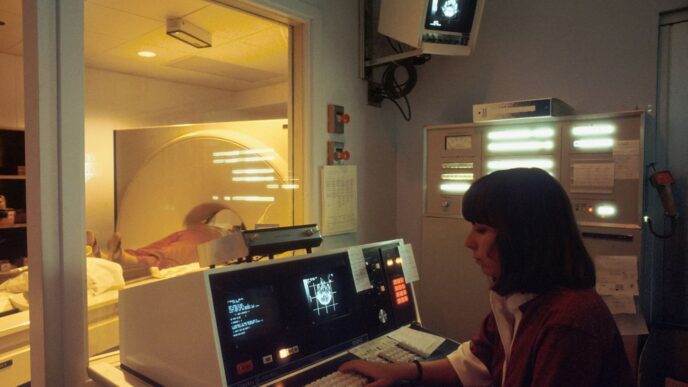The Foodsmart program is changing how people think about nutrition in 2025. Instead of cookie-cutter diets, they’re making it personal—no matter your income or where you live. With new funding and a bunch of tech tools, Foodsmart is reaching more folks than ever. They’re not just talking about healthy eating—they’re making it real, affordable, and actually doable for millions of Americans. Whether you’re on Medicaid, managing a chronic illness, or just trying to eat better, this program is finding ways to help.
Key Takeaways
- Foodsmart program uses telenutrition to bring personalized nutrition to people who often get left out, like those on Medicaid or Medicare.
- They connect with health plans, doctors, and local food partners so members can get healthy food, nutrition advice, and even help with SNAP and food benefits.
- Doctors can now “prescribe” healthy foods through Foodsmart’s Foodscripts, making it as easy as getting a prescription for medicine.
- Tech tools like AI meal planning, grocery delivery, and health tracking make it simple for users to stick with healthy habits.
- With a $200 million investment from The Rise Fund, Foodsmart is set to grow nationwide and keep pushing the idea that food really is medicine.
Expanding Access to Personalized Nutrition with the Foodsmart Program
The Foodsmart Program is changing how people get nutrition support, especially for those who need it most. It’s not just about personalized meals—it’s about making real nutrition help easy for everyone, no matter their income or insurance.
Leveraging Telenutrition for Underserved Communities
Foodsmart puts real dietitians within reach by using telenutrition, which can be accessed at home on a phone or computer. This makes a huge difference for folks who can’t easily get to a clinic or live in rural areas where choices are limited. Here’s how it works in day-to-day life:
- Appointments are online, skipping the challenges of travel and time off work
- Meal recommendations rely on what a family actually eats, not generic guidelines
- Language and cultural preferences are taken seriously—no one-size-fits-all advice
Getting personal nutrition care from home or your phone means no one is left out, even if getting to an office is impossible.
Partnerships with Health Plans and Providers
Working hand-in-hand with health plans and clinics is key to Foodsmart’s reach. By building relationships with those already caring for millions, the program becomes a part of regular healthcare—not a separate service for just a few. Some benefits include:
- Automatic nutrition referrals by doctors for patients who need extra help
- Coordination so subsidized meals and benefits are built in, not tacked on
- Broader coverage under Medicaid, Medicare, and employer insurance plans
Here’s a quick look at how Foodsmart collaborates:
| Health Plan Type | % of Total Members Supported |
|---|---|
| Medicaid Managed Care | 40% |
| Medicare Advantage | 25% |
| Employer/Commercial | 25% |
| Direct to Consumer | 10% |
Supporting Medicaid and Medicare Populations
Foodsmart actively works to include people who often get left behind in health programs. Many Medicaid and Medicare members face the toughest barriers—like limited income, transportation challenges, or confusing benefit systems. The program’s support for these populations involves:
- Personalized food plans that account for medical needs and SNAP (food stamp) eligibility
- Simplified grocery delivery and meal options for those with mobility issues
- Education and ongoing support to help build lasting skills around healthy eating
When affordable nutrition gets built into health insurance, even people with complex lives or chronic conditions have a fair shot at getting healthier.
Foodsmart Program’s Innovative Solutions for Better Food Access
When you talk about actually getting healthy food into people’s homes, a lot of programs fall short. The Foodsmart Program, though, has built out some pretty direct ways for folks to not only access the food they need, but also manage the whole process, which makes a big difference when money and time are tight.
Integrating SNAP and Food Benefit Management
Foodsmart blends digital tools with SNAP and other food assistance programs, so it’s way easier for people to sign up, track, and use their benefits. Everything runs on one platform—so you can apply for SNAP, find out if you qualify for food programs, and choose the healthiest items that work inside your budget. Here’s what that looks like for members:
- Quick check to see eligibility for SNAP or WIC.
- Built-in reminders for benefit renewal dates.
- Track spending and balance in real-time, right from your phone or desktop.
- Get suggestions for healthy swaps that fit within your allowance.
This setup is perfect for folks juggling work, family, and healthcare appointments. No guessing, less paperwork, and a better shot at avoiding unhealthy, cheap options just because they’re the only ones you can grab in a hurry.
Connecting Local Grocers and Medically Tailored Meal Partners
Getting healthy food means more than just money—it’s about access and options. Foodsmart plugs users into a network of local grocery stores and food partners that deliver, even if you’re in a food desert. Instead of relying only on a big chain that might be miles away or doesn’t accept all benefits, the app lets you:
- Browse groceries, compare prices, and order for pickup or delivery.
- Use insurance or benefit dollars for ready-to-eat, medically tailored meals.
- Partner with community food providers who prep meals for diabetes, hypertension, and other common conditions.
| Feature | What Users Get | Who Benefits |
|---|---|---|
| Local Grocery Integration | Nearby fresh produce/meats | Urban & rural families |
| Medically Tailored Meal Partners | Meals for chronic disease needs | Patients with special diets |
| Delivery Options | At-home drop-off or store pickup | Seniors, disabled individuals |
Sometimes, just being able to have a week’s groceries land on your porch instead of waiting for a ride, or worrying if the store will take your benefits, is the thing that finally gets a family to eat better. Convenience isn’t a luxury—sometimes it’s survival.
Eliminating Barriers to Healthy Eating
Sticking with a new, healthier way of eating can be tough. Foodsmart tackles three stubborn hurdles for its members:
- Cost: Gives budget tools and options for subsidized or discounted healthy foods and meals.
- Education: Connects members with nutrition coaches who actually explain the “why” behind food choices, instead of just handing you a list.
- Logistics: One app that combines everything—benefits, ordering, recipes, and support—so people only need to go to one place, not three websites and a stack of forms.
This hands-on approach to fixing how people actually buy and eat food means healthy choices are less a fantasy, more routine. For many, it’s the first time that “good nutrition” feels even remotely possible.
Revolutionizing Healthcare Through Foodsmart Program’s Foodscripts

A lot of us know that changing the way people eat is one of the hardest things in healthcare. The Foodscripts program from Foodsmart is tackling this challenge by letting doctors write actual nutrition "prescriptions" right in the exam room. This isn’t just telling folks to "eat better"—it’s a coordinated effort that connects people to resources, food, and support they might not get otherwise. Here’s how Foodscripts is shaking things up in 2025.
Physician-Led Nutrition Referrals
Doctors can now refer their patients directly to Foodsmart’s network of registered dietitians. Instead of sending patients away with vague instructions, physicians can order real, actionable food guidance. Here’s what usually happens:
- The doctor writes a Foodscripts referral based on the patient’s real health needs.
- The patient gets connected with a dietitian—many can do this from home.
- Guidance is personalized, making it easier to stick to and actually work.
The shift to physician-led referrals means people get nutrition help that lines up with their entire care plan, not just a quick chat at the end of an appointment.
Customized Dietary Guidance for Chronic Disease
Customized nutrition isn’t a one-size-fits-all deal. With Foodscripts, each patient gets advice that fits their diagnosis—whether it’s diabetes, high blood pressure, or cholesterol. The process usually covers:
- Comprehensive dietary assessment
- Meal planning that works with health conditions and budgets
- Ongoing check-ins to make real progress
This isn’t just diet advice, it’s part of managing chronic disease day to day.
Subsidized Meals and Collaborative Care Models
One of the best parts is access to subsidized, healthy foods for people who need it most. It’s not always easy to afford or even find the food you’re supposed to eat. Foodscripts bridges that gap through:
- Discounted medically tailored meals delivered to patient homes
- Partnerships with both health plans and food aid programs
- Integration with the patient’s doctor and care team to track progress
Here’s a quick look at what Foodscripts has achieved already:
| Indicator | Result |
|---|---|
| Average Monthly Healthcare Savings | $24 – $58 per member |
| Improvement in HbA1c (diabetes) | Significant decrease after 1 year |
| Long-term Food Insecurity Relief | Continued improvement over 3+ years |
All in all, Foodscripts is bringing the idea of "food as medicine" to real life, making it more practical for doctors, and much more accessible for their patients. Instead of nutrition being an afterthought, it’s now front and center in the care plan—backed by real resources and measurable results.
Demonstrating Long-Term Health Impacts with the Foodsmart Program

Clinical Outcomes and Cost Savings
Foodsmart has tracked health changes across millions of members, showing real shifts in outcomes like diabetes, obesity, and hypertension. Within the first year, average savings ranged from $24 to $58 per member monthly, mainly through avoided medical costs and better-managed conditions. Even after three years, many users saw improvements.
Here’s a quick look at some results:
| Health Metric | Improvement (Year 1) | Two-Year Trend | Three-Year Trend |
|---|---|---|---|
| Monthly Medical Savings | $24 – $58 | Maintained | Still increasing |
| HbA1c (Diabetes Measure) | Down (by avg 1 pt) | Stable | Often sustained |
| Food Insecurity Score | Decreased | Lowered further | Reversal in many |
These steady results come from constant guidance, access to dietitians, and changes in shopping and eating patterns, not just quick fixes.
Addressing Food Insecurity and Chronic Disease
It isn’t only about numbers—the experience of members tells a story:
- Families reported being able to afford and find healthy food for the first time.
- Doctors using “foodscripts” connect patients to expert dietitians who help adapt diets around medical needs and tight budgets.
- Foodsmart’s approach even helps people with low incomes, especially those at greater risk for chronic disease.
Many provider partners, including major health systems, now consider food access a real part of health care, supporting food purchases and sustained changes over time.
Sustained Health Improvements Over Time
Long-term health improvements didn’t just happen for a lucky few. In multiple studies, Foodsmart found that members:
- Kept up better eating habits years after first signing up.
- Saw markers like blood sugar and cholesterol continue to drop or stay stable.
- Reported fewer trips to urgent care or the ER for food-related issues.
It’s clear this program is about lasting change—not just a short burst of motivation but a new normal for living and eating. As more research follows these members, Foodsmart’s model could push other telenutrition programs to aim higher, helping people not only manage but prevent chronic problems that start in the kitchen.
The Role of Technology in Personalizing Nutrition with Foodsmart Program
Technology is the backbone of Foodsmart’s approach to tailored nutrition. Honestly, if you’d asked people a decade ago if an app could help millions spend less on groceries while tackling diabetes or high blood sugar, they’d have laughed. Now, with a few taps, users are getting guidance and groceries delivered to their front door.
AI-Driven Meal Planning Solutions
Foodsmart’s digital brain sorts through diets, allergies, and past meals to suggest exactly what a person should eat next. The system can create meal plans that fit anyone’s health conditions, budget, and food preferences—without needing a nutrition degree.
- Makes use of user data (like favorite foods and medical needs) to suggest recipes
- Recomputes plans if a person switches diets (say, keto to low-sodium)
- Mixes in new grocery deals and seasonal foods to keep things interesting
Here’s a quick look at what Foodsmart’s AI considers:
| Factor | Example Used |
|---|---|
| Health Conditions | Type 2 diabetes, IBS |
| Dietary Preferences | Vegetarian, gluten-free |
| Budget | <$50/week, SNAP user |
| Cultural Tastes | Latinx, Mediterranean |
| Local Availability | Grocers, food partners |
For a peek at how such tools are shaping society, see advances in human-like robots and smart automation.
Digital Tools for Meal Ordering and Grocery Delivery
Ordering delivery used to mean pizza and fries. Now, with Foodsmart, people can have diet-friendly groceries and ready-to-eat meals shipped straight to their front step. The integration between the app and local stores means users see more choices that fit their needs.
A few key features make this possible:
- Real-time inventory checks with nearby grocers—less out-of-stock frustration
- Simple reorder for weekly meal staples
- SNAP and Medicaid payment support, so users on tight budgets aren’t left out
When you’re tight on time, tired, or just overwhelmed, it’s much easier to say ‘yes’ to healthy eating when the right food arrives at the right time.
Data Integration and Health Tracking
What really sets Foodsmart apart is how it blends together all sorts of information—medical, nutritional, behavioral—and uses that to help each person track progress. It remembers when you hit your vegetable goals, flags gaps in your nutrition, and can share updates with your dietitian or doctor if you give permission.
Some things you can do with Foodsmart’s health-tracking tools:
- Link up your doctor’s advice with your shopping list
- Track daily, weekly, and monthly progress toward goals (blood sugar, food variety, etc.)
- Securely share progress reports with your care team
At the end of the day, it’s still up to you to prep that salad or blend your smoothie, but Foodsmart’s tech removes the guesswork and the hassle from choosing what’s next.
Recent Investments and Future Growth of the Foodsmart Program
Rise Fund’s Multimillion-Dollar Backing
Foodsmart made headlines in 2024 with a bold step: a $200 million investment from The Rise Fund. This boost is set to fuel Foodsmart’s mission to bring healthy eating within reach of millions more, especially those struggling with chronic disease or food insecurity. The Rise Fund’s involvement marks a new era, putting Foodsmart among the leaders in telenutrition and food benefits management.
- Largest single funding round to date for Foodsmart
- Focus on expanding food and nutrition access to underserved populations
- Backing comes from a fund known for supporting impactful community health solutions
| Funding Round | Date | Amount | Lead Investor |
|---|---|---|---|
| Series D | June 2024 | $200 million | The Rise Fund |
With this funding, Foodsmart plans to support more families, roll out new tools, and keep making nutrition easier and more personal for everyone.
Nationwide Expansion Strategies
Foodsmart isn’t standing still. With fresh funding in hand, they’re ramping up efforts to reach every corner of the nation. Here’s how they’re growing:
- Building partnerships with big health systems and insurers
- Expanding its network of registered dietitians to cover all 50 states
- Integrating digital food markets so users can easily plan, shop for, and afford healthy meals
This push helps Foodsmart reach 2.2 million members—and this number is only expected to climb as they lock in more deals with Medicaid and Medicare plans, as well as employers. Their commitment to smarter operations can also be seen in the way they use technology to track and optimize nutrition care, making processes smoother for everyone involved.
Fostering Innovation in Food-as-Medicine
Investments from The Rise Fund aren’t just about expansion; they also pave the way for Foodsmart to try bold new ideas.
Some forward-looking moves include:
- Strengthening technology for better, faster personalized nutrition plans using AI
- Developing programs that help doctors "prescribe" healthy foods just like medicine
- Collaborating with community organizations to cut down food insecurity
These innovations put Foodsmart right in the center of the food-as-medicine conversation, shaping how both technology and health systems can work together to improve lives.
The next few years look to be very busy and full of opportunity for Foodsmart, as they work to turn healthy eating from a luxury into something anyone can achieve regardless of zip code or income.
How Foodsmart Program Supports Complex Medical Interventions
Nutrition Guidance for GLP-1 Therapy
GLP-1 medications have changed the way doctors treat diabetes and obesity, but getting the best results isn’t just about taking a pill or injection. What makes Foodsmart stand out is how it matches dietary coaching to each patient’s medication plan. Their dietitians work with people while they’re on GLP-1 therapy to build a routine that works with the body’s changes, avoid common side effects, and help keep weight off. This isn’t just generic advice—each person gets tips that match their stage in the process, taste preferences, and budget.
Common Foodsmart GLP-1 Support Steps:
- Meal planning focused on protein, fiber, and hydration
- Ongoing check-ins as medicine doses change
- Recipe swaps for easier digestion and blood sugar control
For most folks, staying motivated on GLP-1 is half the battle, but having weekly advice from a dietitian helps you stay on track, keeps meals interesting, and makes the process feel much less isolating.
Assisting Patients Undergoing Bariatric Surgery
Making it through bariatric surgery—like a gastric bypass or sleeve—is a pretty big milestone, but the adjustment afterward is even more important. Foodsmart sets people up with pre-surgery nutrition checklists, targeted grocery lists, and meal prep guides. Then, they guide folks meal-by-meal after surgery, helping track protein goals, vitamins, and how much water is safe at each step. There’s nothing one-size-fits-all here—meal plans shift as the patient’s appetite and doctor’s orders change. Plus, their system links with electronic health records, so updates get to the whole care team.
Here’s what the program usually covers:
- Pre-surgery readiness checks and nutrition classes
- Daily meal reminders and nutrition logging post-surgery
- Direct messaging with registered dietitians for advice
- Adapting plans over six months as the body heals
Enhancing Outcomes in Integrated Care
It’s not just about one surgery, one medication, or one diet plan—most people have two or three things going on at once. Foodsmart pulls together all these threads, making nutrition part of the bigger picture. When patients are getting care for several health problems (like heart disease, diabetes, and high blood pressure at the same time), doctors use Foodsmart data to pick better meal plans, combine food and medicine schedules, and spot issues early.
Key results Foodsmart is seeing:
| Intervention Type | Average Improvement (12 months) | Percent Reporting Sustained Benefit |
|---|---|---|
| GLP-1 Therapy | 7% additional weight loss | 78% |
| Bariatric Surgery | 12% more protein intake | 82% |
| Integrated Chronic Care | 1.2-point lower HbA1c | 74% |
The platform isn’t magic, but it’s a practical bridge between busy doctor visits, complicated food choices, and real change at the dinner table.
Conclusion
So, looking at where things stand in 2025, Foodsmart is doing something pretty different in the world of nutrition. They’re not just talking about healthy eating—they’re making it easier for people to actually get the food and support they need, no matter their income or health issues. With big investments and partnerships, they’re reaching millions and helping folks manage everything from diabetes to food insecurity. The idea that a doctor can prescribe fresh produce as easily as a pill? That’s a big shift. It’s not perfect, and there’s still a lot of work to do, but Foodsmart is showing that personalized nutrition doesn’t have to be out of reach. If this is the future of healthcare, it feels a lot more personal—and a lot more possible for everyone.














